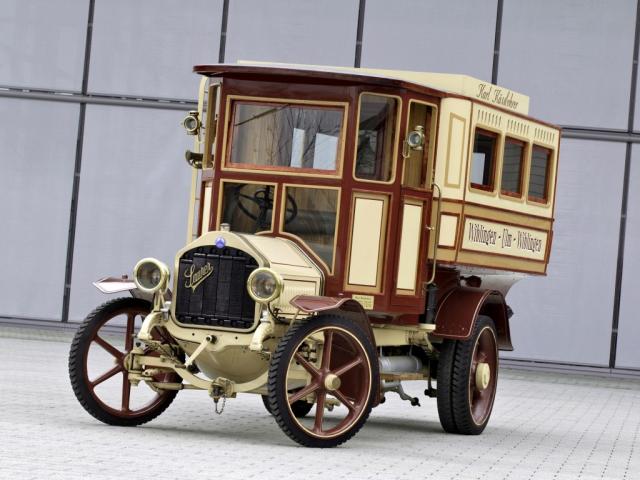1911 Saurer 3-Tonnen Kässbohrer Omnibus
- Brand: Saurer
Seeking an alternative to water power for driving his textile factory's machinery, Swiss industrialist Adolph Saurer developed a stationary internal combustion engine, which was installed in 1888. Improved versions followed and in 1896 Saurer used one of these to power his first automobile. That first Saurer had a 5hp twin-cylinder engine and was also produced under licence in France by the Koch company. Saurer's next car of 1903 was more advanced. Designed by his son Hippolyt, a qualified engineer, it featured a 4.4-litre four-cylinder sidevalve engine, four-speed gearbox and chain final drive. One of Saurer's patents was for a compressed-air starter, and this ingenious device was adopted by Brasier, Panhard-Levassor and Renault. Saurer soon switched to shaft drive and enlarged the engine to 5.3 litres. It then added a 50/60hp luxury model to the range, powered by a 9.2-litre development of the same engine.
A Swiss rival for the Rolls-Royce Silver Ghost, the luxurious 50/60hp Saurer was necessarily very expensive and built in limited numbers, with only 96 being produced by 1911. By this time Saurer had entered the commercial vehicle market, and this side of its business would become more profitable than making passenger cars, which were dropped after 1917. A pioneer of the diesel engine for road use, Saurer was for many years Switzerland's largest manufacturer of commercial vehicles.
The company was taken over by Daimler-Benz in 1982 and within a few years this once famous name had disappeared.
It's an idea becomes self-supporting. The first Kässbohrer bus, on a Saurer chassis, built in 1911.
Descriptions & pictures by bonhams & media.daimler & en.wheelsage & myntransportblog & other
| Specification | |
| Production Start | 1911 |
| Production End | 1912 |
| Country of origin | Switzerland |


































